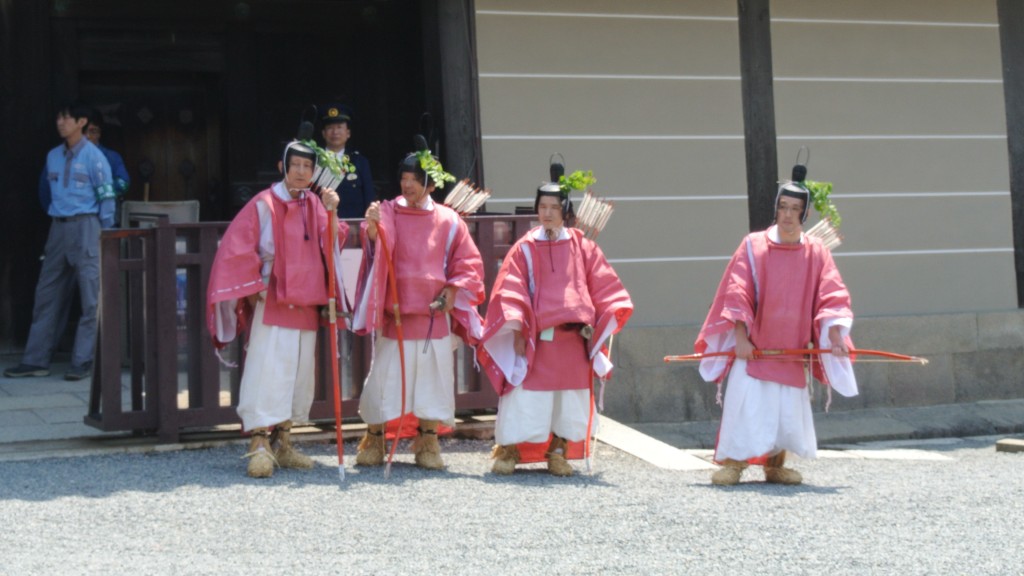
Palace guards, past and present
Aoi Festival Grand Procession: Ancient Capital Shines under Clear Skies
adapted from the Kyoto Shimbun
The Aoi Festival, the first of Kyoto’s three major festivals, stretched out through Kyoto City today. A total of 511 participants dressed in noble costumes gracefully proceeded along the streets of the ancient capital. According to Kyoto Prefectural Police figures at 11:00a.m., approximately 19,000 visitors gathered along the route to enjoy the dazzling spectacle of the Heian dynasty.\
The Aoi Festival is an annual festival of Kamigamo Shrine in Kita Ward and Shimogamo Shrine in Sakyo Ward. Although its formal name is “Kamo Festival,” it is called “Aoi” instead from the decorations of Aoi leaves, or mallows, on the costumes of the procession participants. The origin of the festival dates back to the 6th century fable of the Emperor praying for national prosperity and rich harvests.
In the clear, warm weather, the approximately one-kilometer long procession departed at 10:30a.m. from the Kenrei-mon Gate of the Kyoto Imperial Palace in Kamigyo Ward, Kyoto. In the main procession called “Konoezukai-dai Retsu,” children dressed in “Suikan” costumes pulled the ropes of an ancient oxcart decorated with wisteria flowers, and “Konoezukai-dai,” representing imperial retainers, advanced in a dignified manner riding on horseback.
The “Saio-dai Retsu” with court ladies followed at the back of that procession. As the “Saio-dai,” or festival heroine, on the “Oyoyo,” or a wheeled palanquin, who was dressed in elegant “Junihitoe,” or traditional multi-layer court costume, along with other court ladies and girls approached, residents and tourists along the streets were fascinated by her pure beauty.
*************************************************
Kyoto Shimbun 2013.4.15
Maiko Nagase Selected as Aoi Festival Heroine: The 58th Saio-dai Hopes to “Serve Wholeheartedly”
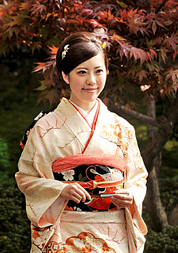
This year's Saio-dai without her make-up and costume
Maiko Nagase from Sakyo Ward, Kyoto, was selected as the 58th “Saio-dai,” or heroine of the Aoi Festival, one of the three major Kyoto festivals, which is held on May 15. It was announced by the “Aoi-Matsuri Gyoretsu Hozonkai,” or Aoi Festival procession conservation group, on April 15. She is a third year student at University of the Sacred Heart in Tokyo, who is now living in Shibuya Ward, Tokyo.
Maiko is the oldest daughter of Takamitsu Nagase and Itsumi Nagase. Her father runs Kyoraku Co., Ltd, which manufactures and distributes plastic products. She enjoys cooking and playing golf, tennis, and the flute in her free time. Maiko faced the press conference dressed in a kimono which her grandmother, Hiroko, selected for her. “I would like to serve the role wholeheartedly, with gratitude. My wish is to become an attractive Saio-dai, always having dignity and a smile,” said Maiko, when asked about her hopes.
The press conference was held in Kyoto Heian Hotel in Kamigyo Ward, the site of a residence of Maiko’s grandfather, Shunzo Nagase, in the 1930s. The Japanese garden at the time is said to remain the same as it was then. “If my father were still alive, he would be more pleased than anyone to have it announced here that my daughter will serve as the Saio-dai,” said Maiko’s father, Takamitsu.
The Saio-dai is the heroine of the Aoi Festival, who serves at religious rites of the festival for the Saio, or an Imperial Princess, who served the Kamigamo and Shimogamo Shrines in the Heian Period. The role was revived in 1956 as Saio-dai, long after being abolished in the early Kamakura Period.
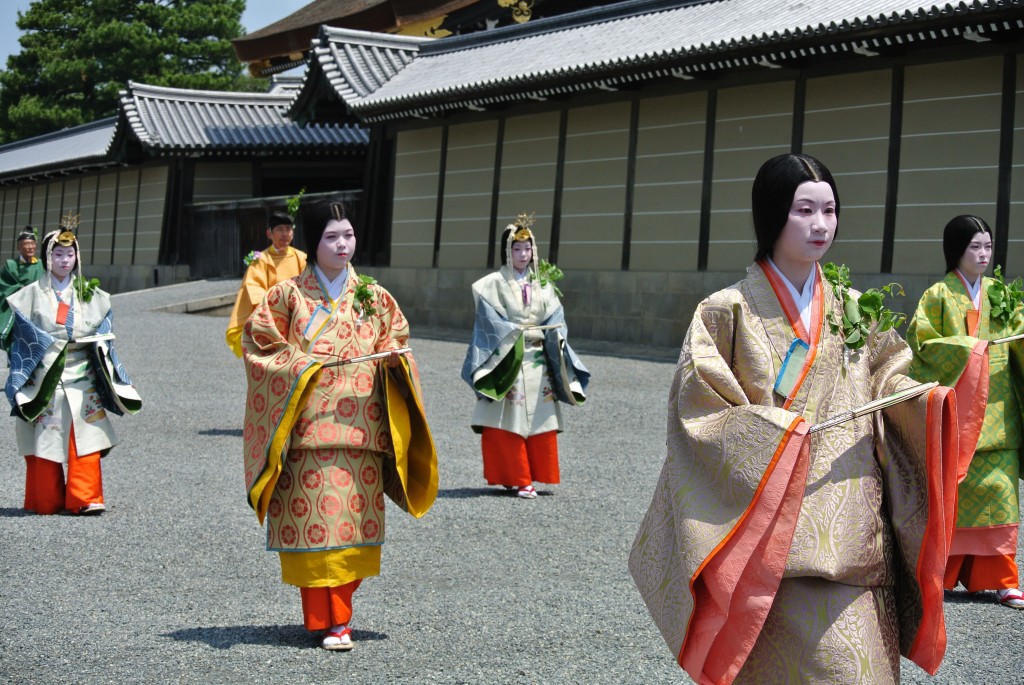
Women dressed in Heian-era kimono setting off in the parade from Gosho (Former Imperial Palace)

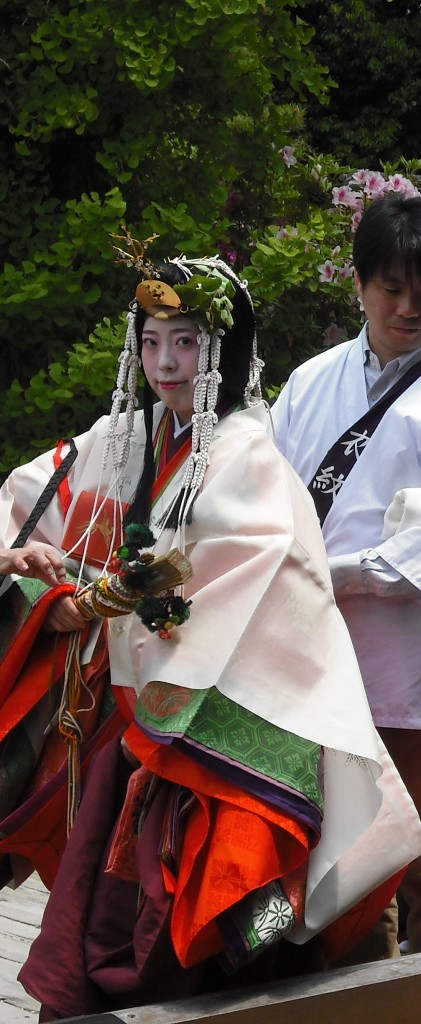
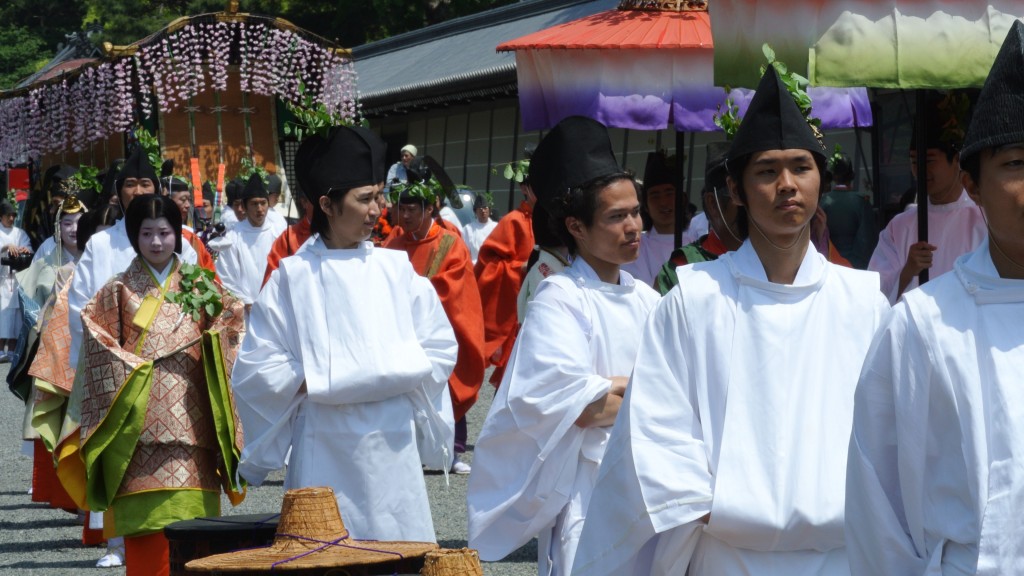
Leave a Reply